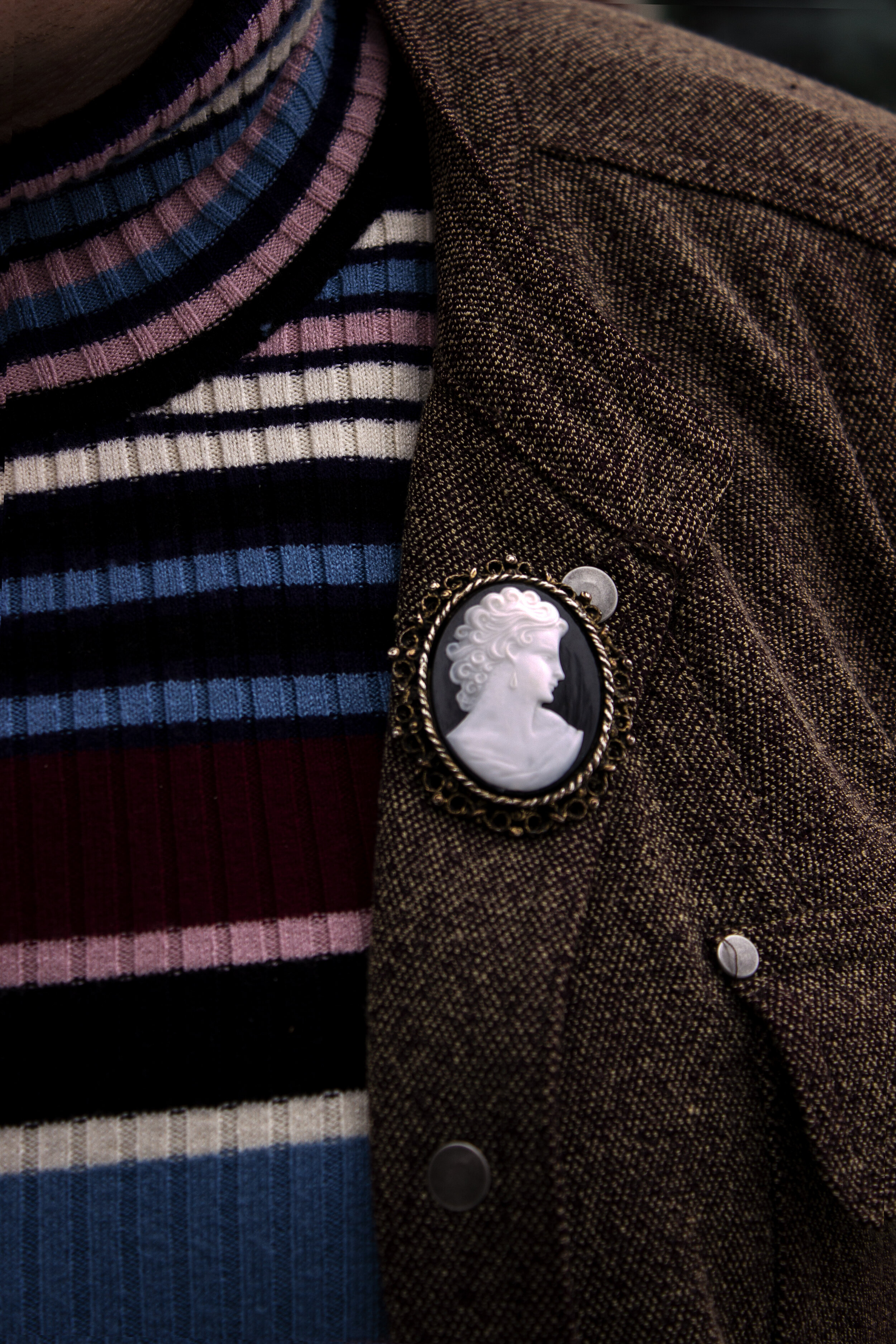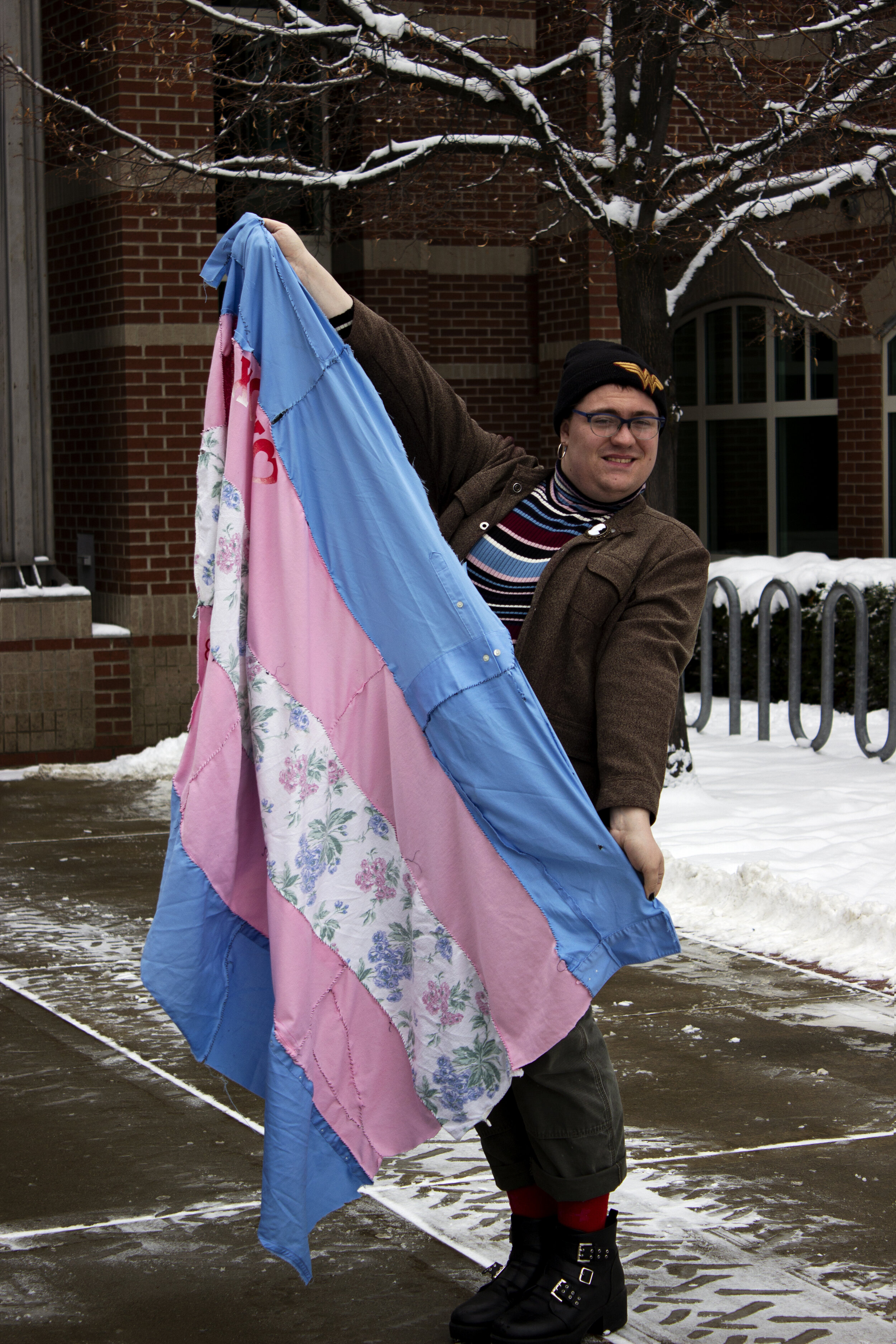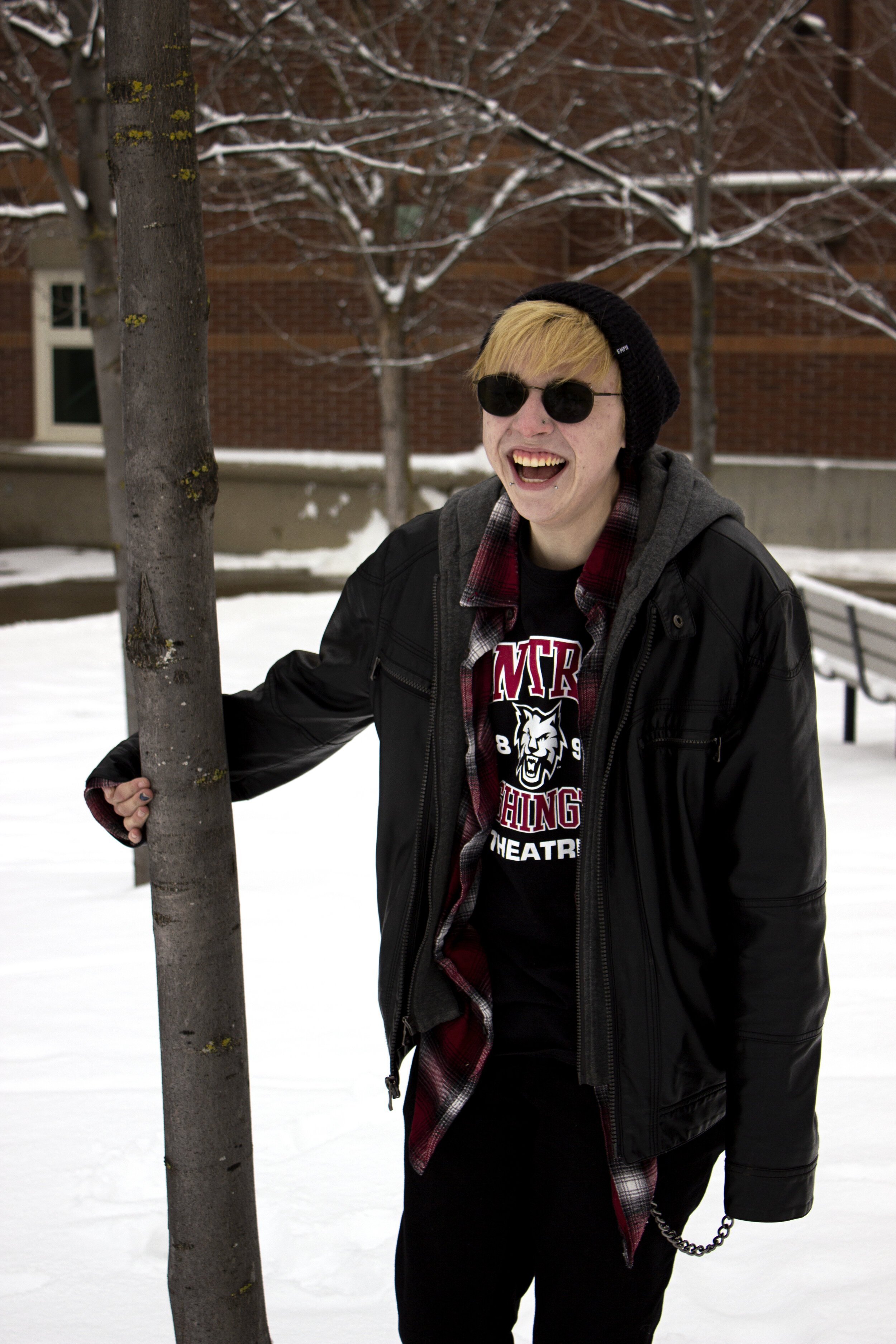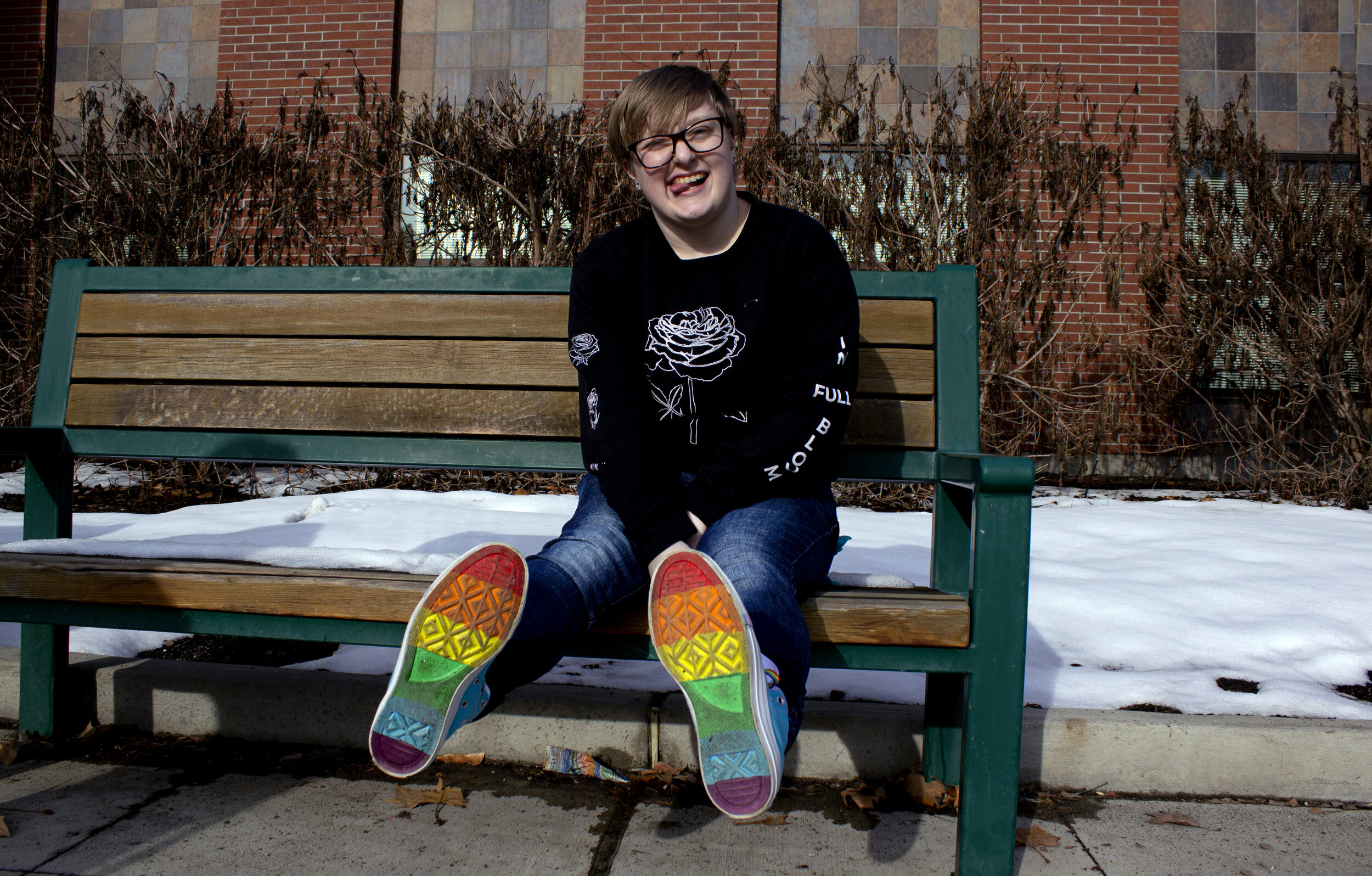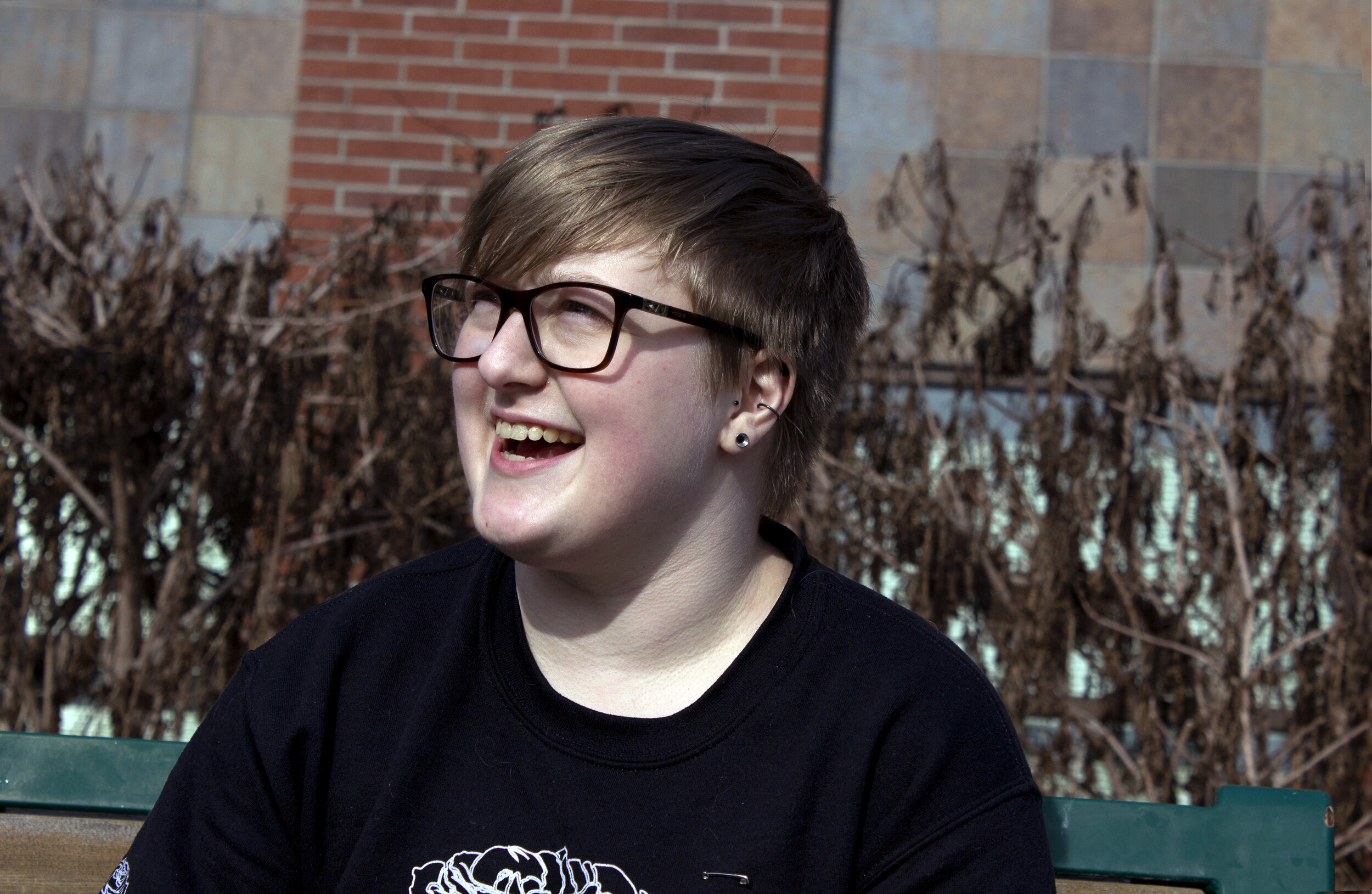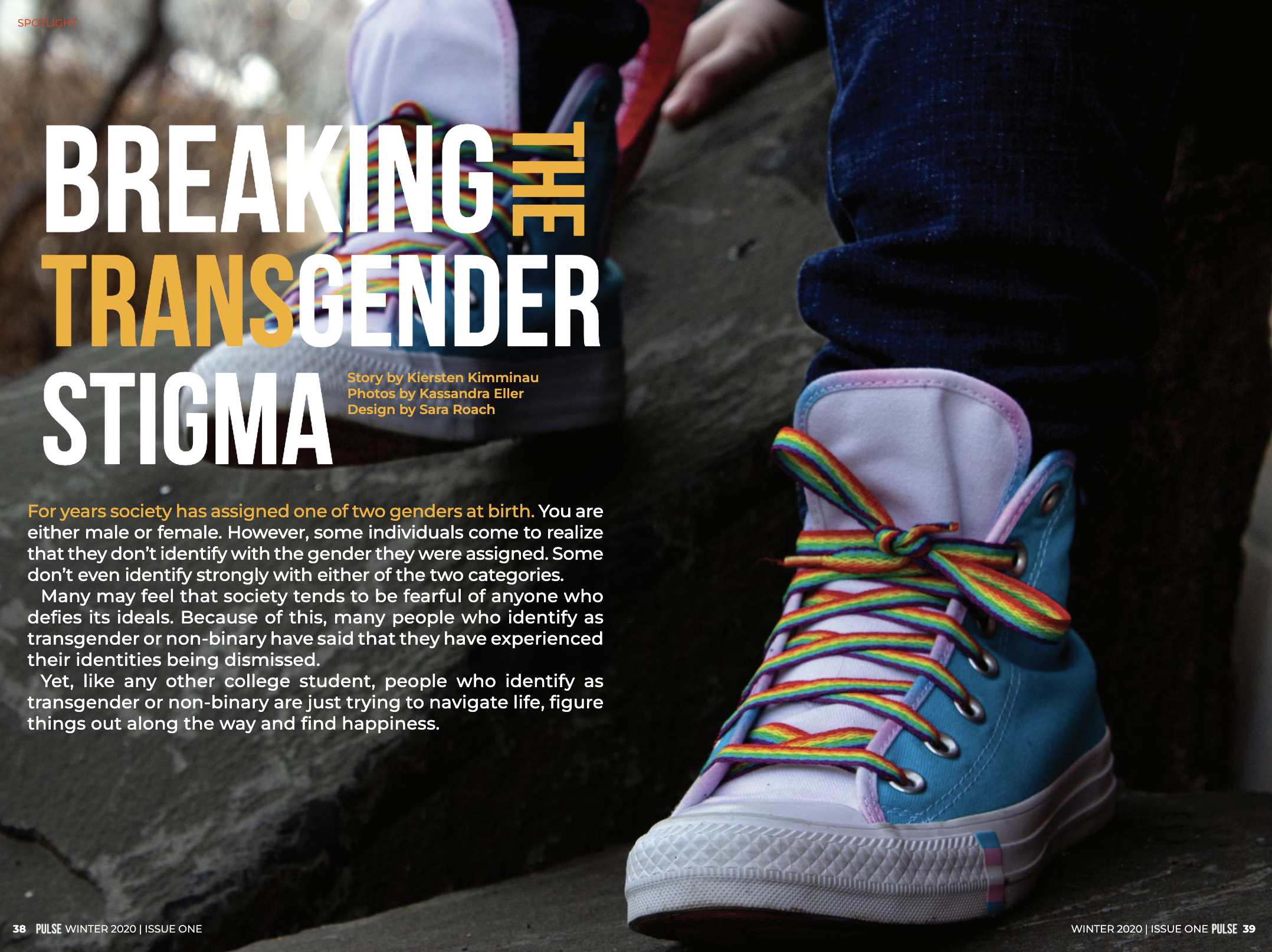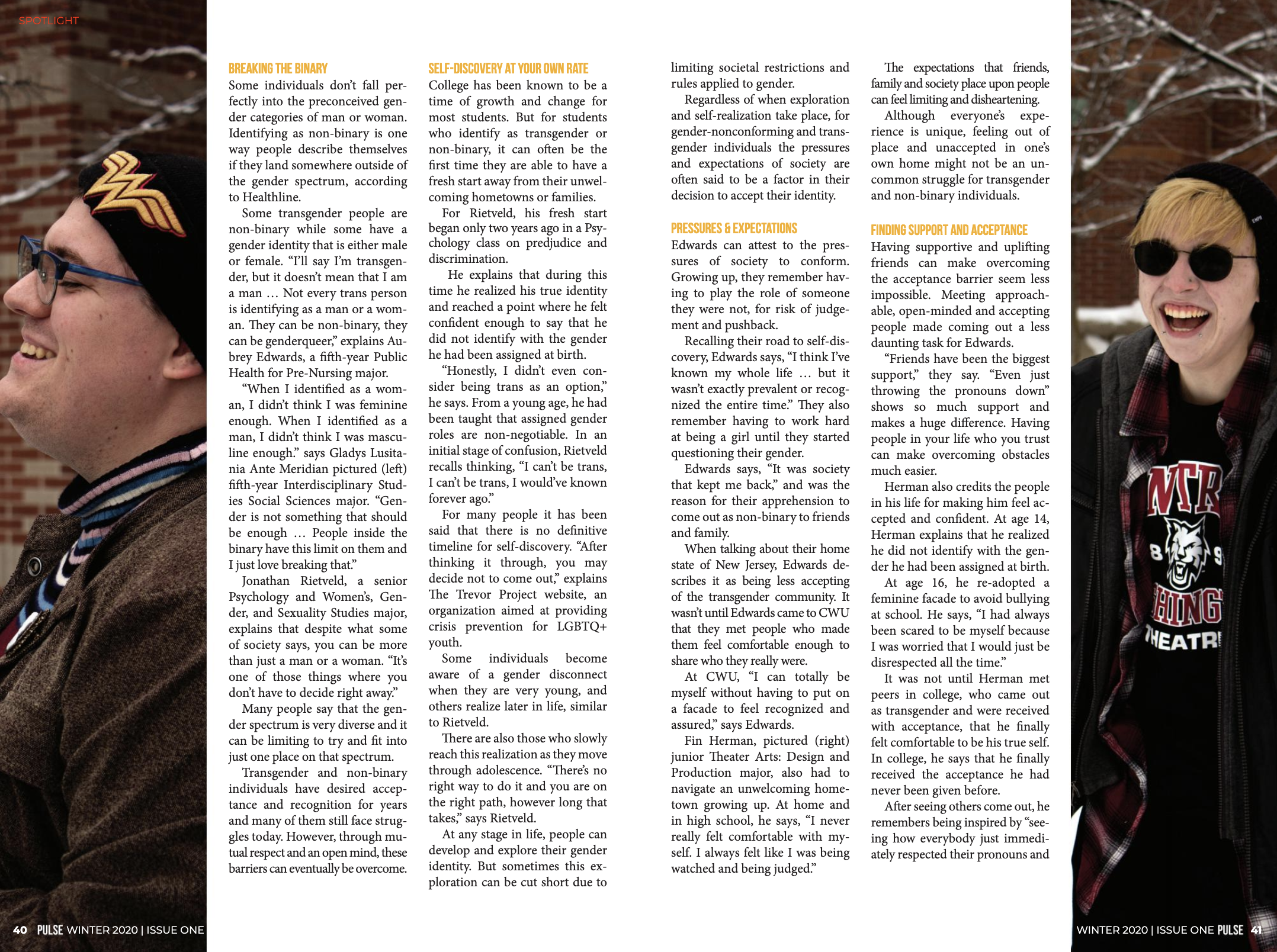Breaking the Transgender Stigma
Story by Kiersten Kimminau | Photos by Kassandra Eller | Design by Sara Roach
For years society has assigned one of two genders at birth. You are either male or female. However, some individuals come to realize that they don’t identify with the gender they were assigned. Some don’t even identify strongly with either of the two categories.
Many may feel that society tends to be fearful of anyone who defies its ideals. Because of this, many people who identify as transgender or non-binary have said that they have experienced their identities being dismissed.
Yet, like any other college student, people who identify as transgender or non-binary are just trying to navigate life, figure things out along the way and find happiness.
Breaking the Binary
Some individuals don’t fall perfectly into the preconceived gender categories of man or woman. Identifying as non-binary is one way people describe themselves if they land somewhere outside of the gender spectrum, according to Healthline.
Some transgender people are non-binary while some have a gender identity that is either male or female. “I’ll say I’m transgender, but it doesn’t mean that I am a man … Not every trans person is identifying as a man or a woman. They can be non-binary, they can be genderqueer,” explains Aubrey Edwards, a fifth-year Public Health for Pre-Nursing major.
“When I identified as a woman, I didn’t think I was feminine enough. When I identified as a man, I didn’t think I was masculine enough.” says Gladys Lusitania Ante Meridian pictured (left) fifth-year Interdisciplinary Studies Social Sciences major. “Gender is not something that should be enough … People inside the binary have this limit on them and I just love breaking that.”
Jonathan Rietveld, a senior Psychology and Women’s, Gender, and Sexuality Studies major, explains that despite what some of society says, you can be more than just a man or a woman. “It’s one of those things where you don’t have to decide right away.”
Many people say that the gender spectrum is very diverse and it can be limiting to try and fit into just one place on that spectrum.
Transgender and non-binary individuals have desired acceptance and recognition for years and many of them still face struggles today. However, through mutual respect and an open mind, these barriers can eventually be overcome.
Self-Discovery at Your Own Rate
College has been known to be a time of growth and change for most students. But for students who identify as transgender or non-binary, it can often be the first time they are able to have a fresh start away from their unwelcoming hometowns or families.
For Rietveld, his fresh start began only two years ago in a Psychology class on predjudice and discrimination.
He explains that during this time he realized his true identity and reached a point where he felt confident enough to say that he did not identify with the gender he had been assigned at birth.
“Honestly, I didn’t even consider being trans as an option,” he says. From a young age, he had been taught that assigned gender roles are non-negotiable. In an initial stage of confusion, Rietveld recalls thinking, “I can’t be trans, I can’t be trans, I would’ve known forever ago.”
For many people it has been said that there is no definitive timeline for self-discovery. “After thinking it through, you may decide not to come out,” explains The Trevor Project website, an organization aimed at providing crisis prevention for LGBTQ+ youth.
Some individuals become aware of a gender disconnect when they are very young, and others realize later in life, similar to Rietveld.
There are also those who slowly reach this realization as they move through adolescence. “There’s no right way to do it and you are on the right path, however long that takes,” says Rietveld.
At any stage in life, people can develop and explore their gender identity. But sometimes this exploration can be cut short due to limiting societal restrictions and rules applied to gender.
Regardless of when exploration and self-realization take place, for gender-nonconforming and transgender individuals the pressures and expectations of society are often said to be a factor in their decision to accept their identity.
Pressures & Expectations
Edwards can attest to the pressures of society to conform. Growing up, they remember having to play the role of someone they were not, for risk of judgement and pushback. Recalling their road to self-discovery, Edwards says, “I think I’ve known my whole life … but it wasn’t exactly prevalent or recognized the entire time.” They also remember having to work hard at being a girl until they started questioning their gender.
Edwards says, “It was society that kept me back,” and was the reason for their apprehension to come out as non-binary to friends and family.
When talking about their home state of New Jersey, Edwards describes it as being less accepting of the transgender community. It wasn’t until Edwards came to CWU that they met people who made them feel comfortable enough to share who they really were.
At CWU, “I can totally be myself without having to put on a facade to feel recognized and assured,” says Edwards.
Fin Herman, pictured (right) junior Theater Arts: Design and Production major, also had to navigate an unwelcoming hometown growing up. At home and in high school, he says, “I never really felt comfortable with myself. I always felt like I was being watched and being judged.”
The expectations that friends, family and society place upon people can feel limiting and disheartening.
Although everyone’s experience is unique, feeling out of place and unaccepted in one’s own home might not be an uncommon struggle for transgender and non-binary individuals.
Finding Support and Acceptance
Having supportive and uplifting friends can make overcoming the acceptance barrier seem less impossible. Meeting approachable, open-minded and accepting people made coming out a less daunting task for Edwards.
“Friends have been the biggest support,” they say. “Even just throwing the pronouns down” shows so much support and makes a huge difference. Having people in your life who you trust can make overcoming obstacles much easier.
Herman also credits the people in his life for making him feel accepted and confident. At age 14, Herman explains that he realized he did not identify with the gender he had been assigned at birth.
At age 16, he re-adopted a feminine facade to avoid bullying at school. He says, “I had always been scared to be myself because I was worried that I would just be disrespected all the time.”
It was not until Herman met peers in college, who came out as transgender and were received with acceptance, that he finally felt comfortable to be his true self. In college, he says that he finally received the acceptance he had never been given before.
After seeing others come out, he remembers being inspired by “seeing how everybody just immediately respected their pronouns and switched names and were super welcoming and encouraging.”
Upsides and barriers can be encountered wherever you go, but most students report having found CWU to be an accepting space thanks to supportive peers and organizations on campus.
Central Community
Despite being in what is commonly referred to as a more conservative area, some feel that Ellensburg has been an accepting place for people in the LGBTQ+ community.
Tylene Carnell, CWU alumna and Regional Philanthropy Officer of the Seattle Pride Foundation, has remained an active member of the Ellensburg community since she graduated. “I feel like a welcomed part of this community … For the most part, I feel like I’ve found home,” explains Carnell.
CWU prides itself for being among the nation’s top 50 LGBTQ+ friendly universities, according to their website.
One of the aspects of the university that students can find a place in is within the different diversity-centered offices around campus.
Meridian found their place on campus at the Diversity and Equity Center (DEC). “I gravitated towards the DEC because I knew there were good people there and I wanted to be part of that.”
According to their website, the DEC’s mission is to cultivate community on campus and “encourage students to explore their identities, challenge barriers and empower themselves and their communities.”
Things are not always this perfect though. Herman explains that he has still encountered pushback on campus, from people misusing his pronouns to professors refusing to call him by his correct name.
One frustrating thing that Herman notes is when people “slip up, and they’ll make a big deal out of it like, ‘I’m so sorry … I can’t believe I just did that.’” He says that he would much rather people quickly apologize, “correct themselves and move on.”
Meridian emphasizes, “It costs zero dollars to use the right pronouns.”
For some, figuring out what their pronouns are can be an important first step in their journey to find themselves.
In many ways, Edwards’ jour - ney is only beginning as they have recently begun taking tes - tosterone.
Although choosing to take testosterone is not a part of every trans or non-binary person’s experience, for others this can be a huge step in being able to physically represent themselves.
Edwards shares that they have chosen to take testosterone, “so I can look in the mirror and be like … that’s Aubrey.”
Rietveld (pictured to the right) recalls that the first time he looked in the mirror and truly recog - nized himself was after cutting his hair short. Before this change, he says, the mirror reflected “this person who looked pretty similar to me, but didn’t look the same.”
For Rietveld, cutting his hair was a symbolic act of letting go of the opinions of others and rigid family expectations. Upon view - ing himself for the first time after the chop, Rietveld remembers getting the biggest smile and fi - nally being able to say, “that’s me.”
There are many ways for people to express themselves and trans -form — from changing clothing style to getting a new haircut, the possibilities can be endless.
Another thing that may be important to keep in mind is that you never have to stop changing and evolving who you are if you don’t want to. Meridian says, “I’m just coming into a new piece of my identity. My identity changes with the seasons.”
By not limiting themselves to any one section of the store, they find expressive pieces from the men’s, women’s and sometimes even juniors’ sections. “I want to break down these stereotypes that women have to appear a certain way, that men have to appear a certain way. I don’t like that,” says Meridian.
In a society that some say puts strict expectations and limitations upon gender and appearances, Meridian strives to break down these stereotypes.
Opening Up a Dialogue
Coming out as transgender or non-binary can be nerve-racking for some. In order to be themselves, people have said that sometimes it requires going through a period of vulnerability.
If you’re curious about some - one’s experience, that’s okay, but Rietveld wants people to “realize that this is an individual going through a situation just like everything else.”
When approached by someone who is genuinely curious and in good faith, Meridian says, “most trans people would be very open to answering those questions. It’s just a matter of asking and not being scared.”
Some other things you can do if you’re looking to be more un - derstanding and supportive are: not assuming a person’s gender, asking what someone’s pronouns are, using their correct name and not asking inappropriate ques - tions, according to Healthline. You probably wouldn’t want a random person on the street ask - ing about what surgeries you’ve had or to see personal childhood pictures, right?
At the end of the day, everyone’s life experience is unique and valid.
The Trevor Project urges people to remember that “You are valid and deserve support no matter who you do or do not share your identities with.”

